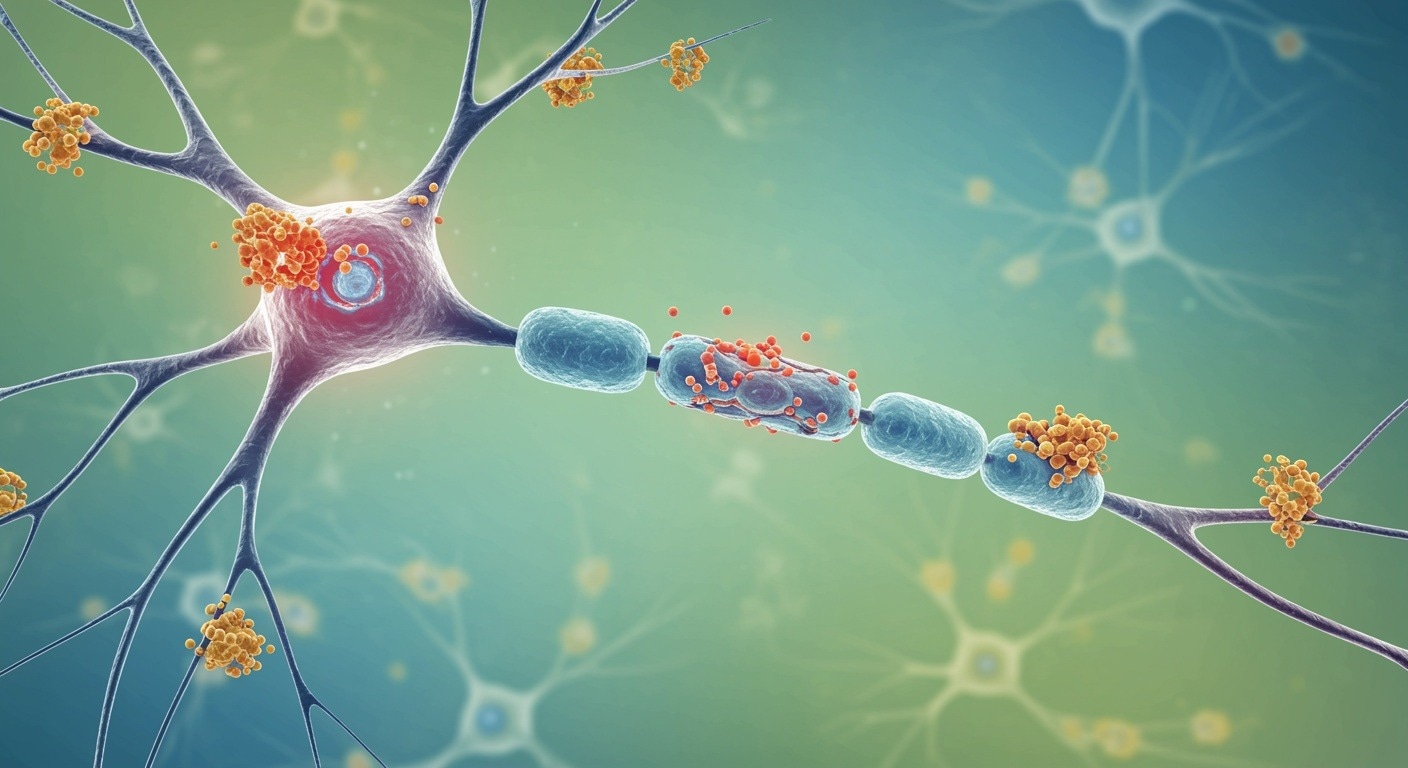Scientists unveil a novel supramolecular therapy that shields human neurons from amyloid-induced damage, offering new hope for treating Alzheimer’s and related neurodegenerative diseases.
 Study: Supramolecular Copolymerization of Glycopeptide Amphiphiles and Amyloid Peptides Improves Neuron Survival. Image Credit: Shutterstock AI Generator / Shutterstock.com
Study: Supramolecular Copolymerization of Glycopeptide Amphiphiles and Amyloid Peptides Improves Neuron Survival. Image Credit: Shutterstock AI Generator / Shutterstock.com
A recent study published in the Journal of the American Chemical Society investigates the role of biocompatible peptide amphiphiles in preventing the misfolding and aggregation of proteins linked to neurodegeneration.
Key pathological features of neurodegenerative diseases
Neurodegenerative diseases (NDs) are characterized by the death of neurons, which leads to severe motor and cognitive impairments. The prevalence of NDs, including Parkinson’s Disease (PD), Alzheimer’s disease (AD), and dementia, continues to rise worldwide, thereby increasing the burden on global healthcare systems.
Protein aggregation, such as amyloid beta (Aβ) and tau, is characteristic of AD, whereas alpha-synuclein aggregation occurs in PD. Protein aggregation leads to the formation of amyloid protofilaments that cluster into amyloid fibrils, which deposit at various locations within the cell.
Current treatment strategies for NDs include inhibiting protein aggregate formation, eliminating misfolded proteins, and modifying cellular responses to manage concurrent damages like oxidative stress.
Innovative approaches to treat NDs
Previous studies have reported the therapeutic benefits of supramolecular self-assembly of materials, particularly nanomaterials, through noncovalent interactions. Peptide-based supramolecular materials are also associated with several advantageous properties for biomedical applications, including superior biocompatibility, bioavailability, and modularity compared to conventional peptides and proteins.
Structural moieties like amino acid sequence or the assembly environment of peptide amphiphiles (PAs) can be modified to alter the strength of their hydrogen bonds and various morphological features. Previously, researchers reported the copolymerization capacity of PA nanofibers with various soluble peptide sequences to form a metastable supramolecular assembly that could improve the delivery of therapeutic peptides to rescue Aβ-related neurotoxicity.
Trehalose, a nonreducing, uncharged disaccharide, has recently been investigated as a protein chaperone capable of protecting proteins from misfolding, denaturation, and aggregation. Trehalose also activates autophagy and reduces the accumulation of protein aggregates, thereby ameliorating neurotoxicity.
About the study
The current study investigates the potential neuroprotective effects of trehalose-PA (TPA) in rescuing amyloid-related neurodegeneration. Researchers hypothesized that functionalization with trehalose would enable TPAs to inhibit amyloid aggregation and stabilize the phenotypes of neurons affected by amyloid-related neurotoxicity.
Various computational methods were used to examine interactions between nonfunctionalized PAs and amyloid beta 1-42 peptide (Aβ42) to elucidate their ability to prevent amyloid aggregation. The therapeutic potential of TPAs was further assessed in vitro using neurons derived from human induced pluripotent stem cells (iPSCs) to determine their efficacy in protecting cells from Aβ42-induced neurotoxicity.
Therapeutic activity of PAs against neurodegenerative diseases
Palmitoyl-VVAAEE (E2) was selected as the unfunctionalized backbone PA due to its superior biocompatibility and capacity to present bioactive motifs with optimized density for neural application. TPAs were synthesized by conjugating and subsequently functionalizing a lysine residue at the C-terminus of E2.
Synchrotron small-angle X-ray scattering (SAXS) was used to analyze E2 and TPA assemblies in annealed and nonannealed conditions. E2 formed filamentous nanostructures in both conditions, whereas nonannealed TPA formed nanofibers and annealed TPA formed small micellar aggregates. The width of TPA nanofibers was smaller than that of E2 nanofibers.
Circular dichroism (CD) spectroscopy, solution synchrotron wide-angle X-ray scattering (WAXS), and Fourier-transform infrared spectroscopy (FT-IR) analyses revealed a higher degree of deprotonation of the glutamic acid residues in TPA assemblies. Cryogenic transmission electron microscopy (cryo-TEM) and negative-staining TEM corroborated the spectroscopic results, thus indicating that both E2 with or without annealing formed twisted nanofibers.
Variable temperature (VT) experiments revealed that the melting point of E2 assemblies was above 80°C. Further heating to 90°C caused the β-sheet signature of E2 to disappear.
The TPA assembly was stable at 50°C, with its β-sheet signature beginning to shrink at 65°C, suggesting that TPA filamentous assemblies at low temperatures are metastable kinetic supramolecular structures. Moreover, TPA supramolecular assemblies were found to modify the aggregation of Aβ42 and TPA-Aβ42 interactions, which altered the nanostructure morphology.
Human motor neurons (MNs) remained viable following treatment with 30 μM or less TPA. Monomeric Aβ42 was incubated at 37°C for 16 hours to induce Aβ42 toxicity, following which four experimental TPA assemblies reduced cell death, which suggests varying levels of rescue. Notably, nonannealed TPA achieved the most effective rescue by reducing Aβ42 neurotoxicity.
Supramolecular nanostructures are an interesting target for therapeutic strategies in neurodegenerative diseases such as Alzheimer’s disease and amyotrophic lateral sclerosis.”
Journal references:
-
Gao, Z., Qiu, R., Dave, D. R., et al. (2025) Supramolecular Copolymerization of Glycopeptide Amphiphiles and Amyloid Peptides Improves Neuron Survival. Journal of the American Chemical Society. doi:10.1021/jacs.5c00105.